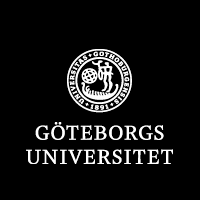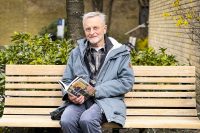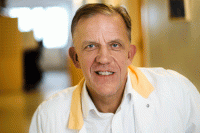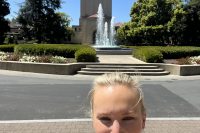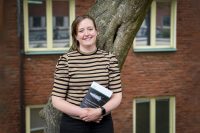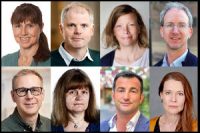
TRAINING. A decision was recently reached to provide introductory training for recently immigrated physicians holding degrees outside of EU/ECC. The course is part of an attempt to help recent immigrants become registered physicians, using earmarked funds from the government. After 10 weeks, 19 participants have now completed the training and it is hoped that they will also pass the much-debated knowledge test in the spring.
The course is a partnership between the Sahlgrenska Academy at the University of Gothenburg and the Swedish Public Employment Service, with all of Sweden as its service area. Just over 60 candidates submitted applications to the Swedish Public Employment Service, and a lottery was held to determine who would be accepted.
“The gender distribution was a little lopsided, with the overwhelming percentage being men and just two women. Their work experience and background also varied more than we initially expected. There were people who had worked as specialists for many decades and those who had just completed their medical degree,” explains Åse Johnsson, docent and senior lecturer at the Sahlgrenska Academy.
Åse Johnsson was given the task of organizing the training in the spring of 2016. She designed the course in consultation with the vice dean, Silvana Naredi, and Agneta Ekman, chair of the medical program committee.
Training positions bridge cultural differences
The majority of participants in this round are from Syria, and many are living here as refugees. A few of them have their families with them, some are single and others are waiting for a job in order to be able to bring their wife and children here. But two immigrated here because of love. Mustafa Ali is one of them. He is 29 years old and met his Swedish wife in Iraq several years ago when he was living there with his family. He received his medical degree in Iraq in 2012 and came to Sweden in 2014 and married here last autumn.

In his homeland, patients after the war have become more critical. They look for a physician to get the medicine that they want. They are not very interested in getting a special diagnosis. If they don’t get what they want, they will say that they are planning to go to another or a “better” physician, or they will go to the pharmacy and get the pharmacist to write the prescriptions, he explains. A lot of medications that require a prescription in Sweden, do not require a prescription in Iraq, for example, antibiotics.
Several of the course participants have held various kinds of trainee positions across Sweden; some through the local employment office and others arranged the position themselves. Some have also taken extra work as a nursing assistant in order to learn the language and the Swedish healthcare system from the inside.
Many joint efforts have produced good results
Åse Johnsson feels that the training time has been good, with enthusiastic participants who were really eager to receive the training. She is happy with the course results, and with all of the support from her colleagues at the Sahlgrenska Academy, Sahlgrenska University Hospital and the healthcare centers that they worked with. Together, they contributed to both the organization and the training activities. Most of the subjects within the medical program are represented in the course, above all the clinical subjects, but the importance of preclinical ones was also been highlighted. She plans on expanding certain parts of the program before the next course starts in February 2017. She will also provide feedback on her experiences and her thoughts about the course to the managers at the Swedish Public Employment Service.
The focus has also been on providing knowledge that cannot be easily read in books, i.e. how we practice medicine in Sweden and how it varies from other countries, and what is expected of a physician who works here.
“This applies to both treating patients and knowledge levels, so that you understand what you are expected to handle yourself and when you need to refer the patient to people with other levels of expertise. In addition, the course also addresses topics within professional development, using a critical scientific approach, ethics and gender issues and finally sustainable development, which are all part of the Swedish perspective.
Patient treatment on the schedule
The training has been interactive and is based on clinical cases using digital training materials, where the intention has been to apply the “flipped classroom” teaching method. Working shifts in the morning are included in the training, where participants can both test and practice their ability to handle different cases that typically turn up in the healthcare system from a critical and systematic point of view. The students meet again for discussion in the afternoon, all under the supervision of the instructors. It has also been important to foster an understanding of how we work in Sweden, based on national and regional guidelines and healthcare programs.
“In terms of pediatrics, at Queen Silvia Children’s hospital they also got to encounter actual pediatric patients and not just test dolls. During their three-day training period at healthcare centers in Västra Götaland, they also got to meet patients and practice their treatment skills.
Exercises at the Klinisk Träningscentrum or KTC, (Clinical Training Center) at the Sahlgrenska Academy and at the Simulator Center (trauma simulation and emergency medicine scenarios) and the pediatric KTC at Sahlgrenska University Hospital were included. Several of the participants felt that the work at the simulator center was particularly beneficial. The different rolls in the simulation, designed to foster collaboration and responsibility between professional groups and to solve tasks together to produce the best care results, also provided new insights.
“This is where several of the course participants had difficulty not assuming the leadership role themselves. There are cultural differences in this case.
Important to continue applying skills after the course
There were no evaluations or grades during the course. Instead, the idea was that each person would make their own assessment of where they are in terms of knowledge and skills. After the course, they will continue to acquire the skills and knowledge that they are lacking.
“All of the course participants continue to have access to course materials via the University of Gothenburg’s Teaching platform (GUL), where our training administrator Jennie Bengtsson made the training material easily available. The course participants also have access to the Medical Program’s GUL pages at the Sahlgrenska Academy, and when they register for the knowledge test, Umeå University opens all of their recorded lectures from the medical program via their web course platform,” explains Åse Johnsson.
Then it is time to register and complete the knowledge and theory test in Umeå, and if they pass, there will also be a practical knowledge test in Umeå as well, and finally there is a 6 month traineeship, explains Eva Karklins from the Swedish Public Employment Service in Gothenburg. She organizes vocational training and ensures that all of the participants get the help that they are entitled to.
Several courses planned for next year
In the spring, the training will also be given in Linköping, and it is hoped that other places will have the ability to provide training for these future physicians entering the Swedish labor market. This has been welcomed by many of the course participants because it has been difficult to find a place to live during the 10 week course, and many are a long way away from Gothenburg. It’s too far to commute. They also thinking about their physician friends who did not come along to the training.

Many of the participants are looking for more training and more in-depth training based on current evaluations. At the same time, they think that the training been excellent and are impressed that Åse Johnsson managed to cover so much essential material.
Mustafa Ali, who speaks both Arabic, Kurdish, English and Swedish fluently, is hoping that he can soon start to be of benefit to the Swedish healthcare system, preferably as a general practitioner at a healthcare center.
The course ends in the traditional Swedish way, with coffee and cake and the participants thank Åse Johnsson with flowers and chocolate.
TEXT AND PHOTOGRAPHY: SUSANNE LJ WESTERGREN
